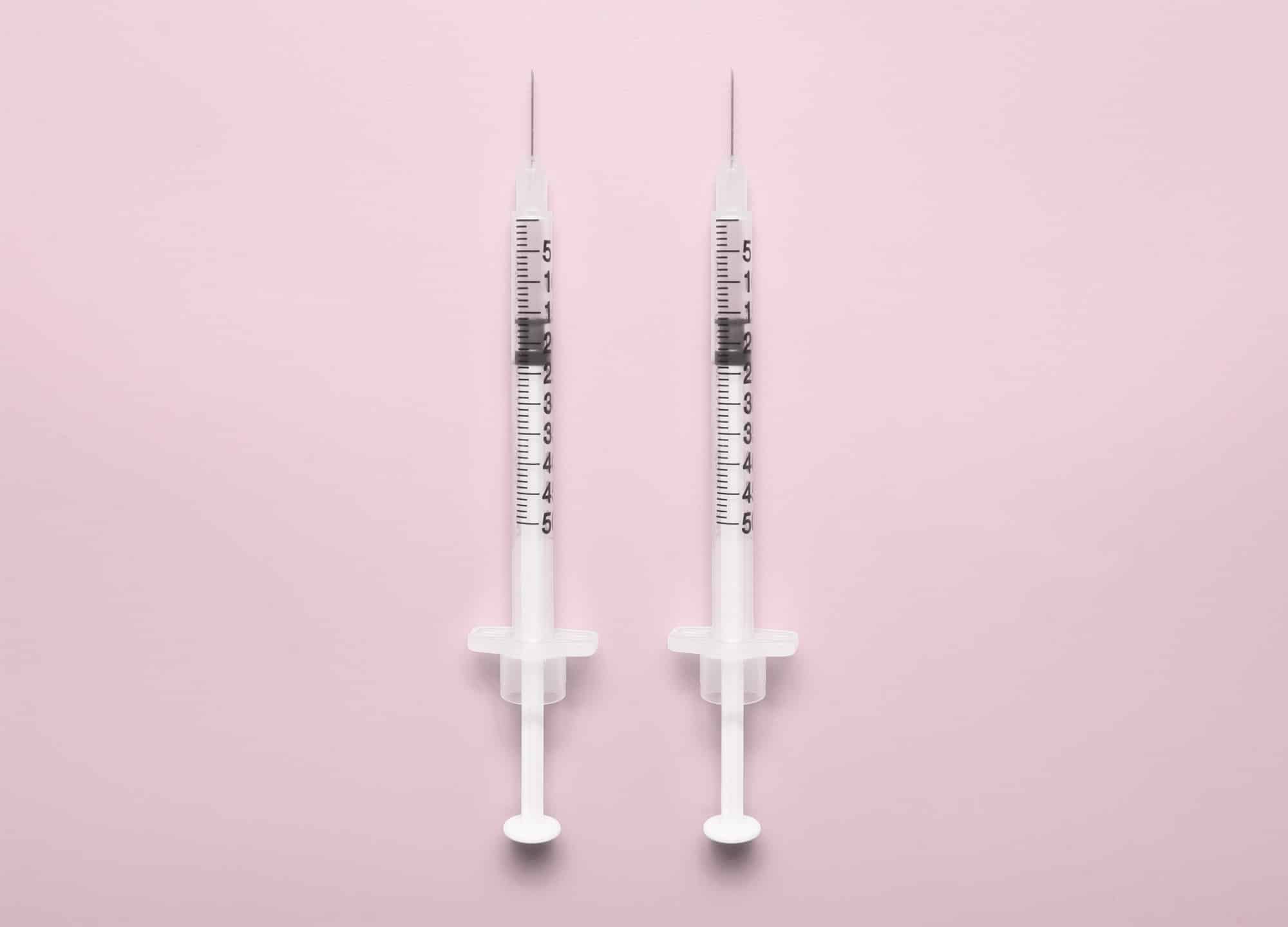When Botox first launched in the cosmetic realm 20 years ago, few imagined the drug becoming a household name—but here we are. With decades of data and a pristine track record, the Kleenex of neuromodulators helped set the stage for the wrinkle-relaxing injectables that followed: Dysport, Xeomin, and Jeuveau. While doctors frequently debate their individual merits and nuances, the fact is, “the similarities between [these four] existing FDA-approved neuromodulators are much greater than the differences,” notes Dr. Ava Shamban, a neurotoxin researcher and board-certified dermatologist in Beverly Hills, California.
In the pipeline though are a handful of truly distinct botulinum toxins aiming to break new ground. “Several of the toxins that are currently in the trial phase or awaiting FDA approval are quite different in onset of action and longevity of effect,” adds Dr. Shamban.
As these beautifying proteins evolve, so too do the ways doctors harness them. “At their inception, we used neuromodulators to soften signs of aging, to help our patients look younger,” explains Dr. Mitalee Christman, a board-certified dermatologist in Boston. But there’s since been a “vibe shift,” she says: “My patients tell me they want to feel refreshed, not look younger. They want their appearance to match their joy for life. We’re moving away from paralyzing all motion to a softer look using different concentrations of neuromodulator, depending on our needs.”
Ahead, top dermatologists weigh in on the injectable wrinkle relaxers of the future.
Daxi: a longer-lasting, vegan neuromodulator
We’ve reported several times now on Daxi (daxibotulinumtoxinA for injection), the longer-lasting neuromodulator from Revance. Supercharged with a performance-enhancing peptide, Daxi has been shown to outlast all currently approved toxins, smoothing glabellar frown lines for six months or more (versus the standard three to four months).
Depending on when it comes to market (the hope is later this year), Daxi could potentially be the first vegan neuromodulator. “It’s a pure protein,” says Dr. Shamban, meaning it’s formulated without human serum albumin (a blood-derived stabilizer) and is free of accessory proteins.
“It is a beast of a toxin—I have never seen [another neuromodulator] get a 55-year-old, etched-in glabellar line table-flat,” adds Dr. Kavita Mariwalla, a board-certified dermatologist in West Islip, New York, who served as an investigator in the trial. Once Daxi gets greenlit, Dr. Mariwalla believes it will be especially ideal for select patients, including men with significant “muscle bulk”; people with creases that are very set in, even at rest; and anyone “who just doesn’t want to come in all the time.”
Daxi’s duration should allow patients to better coordinate their injectable touch-ups. “It’s incredibly annoying when your filler is still in place but your frown line starts to reappear so quickly,” says Dr. Shamban. Dr. Christman agrees, noting that a longer-lasting neuromodulator will be a “nice option for out-of-town patients, who travel to see me for injections.”
BoNT/E: a fast-acting, short-term toxin
A novel type E botulinum toxin (known as BoNT/E) is currently in clinical trials for the treatment of glabellar lines. (The toxin is being developed by AbbVie, which also owns Allergan, maker of Botox.) “Its onset of effect is within 24 hours, with a return to baseline by 30 days or less,” says Dr. Joely Kaufman, a board-certified dermatologist in Coral Gables, Florida, who recently presented on forthcoming neuromodulators at the American Academy of Dermatology (AAD) meeting.
According to a paper published in the Journal of Drugs and Dermatology (JDD) in 2020, the short-term toxin has also been studied for scar reduction after Mohs surgery as well as for reducing musculoskeletal pain following abdominoplasty. When injected immediately after skin cancer removal and repair, it may help improve scarring by immobilizing treatment areas, to lessen tension on surgical wounds. In tummy tuck scenarios, the toxin acts as a muscle relaxant in early recovery, to help ease discomfort.
“The [toxin’s] fast onset may benefit patients who desire a rapid treatment for facial [wrinkles] before unexpected social or professional events,” the JDD authors write. They expect the drug will also appeal to folks who are new to neuromodulators and want to trial the effects for weeks rather than committing for months.
“QM toxin” and Meditox: toxins in liquid form
All four of the neuromodulators currently used in the U.S. are freeze-dried and packaged as powders that require reconstitution, or mixing with saline, prior to injection. According to Dr. Kaufman, however, “we may see two liquid toxins get FDA approval later this year.”
Relabotulinum toxin, or “QM toxin,” from Galderma (maker of Dysport and Restylane) is a type A toxin, like all the versions currently on the market. While the company and its investigators can’t divulge many details, Dr. Kaufman insists that “the toxin is different—a different strain and different manufacturing—and it will, hopefully, have unique characteristics from our current toxins.”
Dr. Shamban adds that the liquid neuromodulator from Galderma is “highly purified,” with a clean profile similar to Daxi’s. “It’s vegan,” she says. “There’s no human albumin, no accessory proteins.” (According to Galderma, the product is “created using an animal-origin-free process.”) Dr. Shamban also describes the drug as “very potent,” explaining that its integrity is maintained because it never goes through any sort of dehydration process, like its powdered counterparts.
The second liquid toxin, Meditox, comes from South Korea. It’s chemically similar to Xeomin but in liquid form, Dr. Kaufman tells us.
Premixed toxins that come ready for injection will be more convenient for injectors—but what’s in it for patients? Consistency, explains Dr. Shamban: No mixing means “there’s no variability in effect.” With powdered versions, on the other hand, injectors “may add different volumes [of saline] to reconstitute them, which could affect their efficacy.” Because when dilution strategies vary, some shots are bound to be stronger than others.
Letibotulinum toxin A: South Korea’s top toxin
Letibotulinum toxin A, from the pharmaceutical company Croma-Pharma, recently wrapped phase III trials assessing the drug’s safety and efficacy for treating frown lines. It’s already available in 28 countries and is the leading toxin in South Korea. Drs. Kaufman and Shamban, who were investigators on the trials, liken letibotulinum toxin to OG Botox.
The bottom line
“All of these neuromodulators, old and new, are tools,” Dr. Christman points out. “I have my favorite tools, and it’s fun to try new tools. But the tools don’t create the art—the best paintings are defined by the artist, not the medium.” Finding an experienced injector whose aesthetic aligns with your own will help ensure you get the best result from whatever neurotoxin you choose to use—now and in the future.











